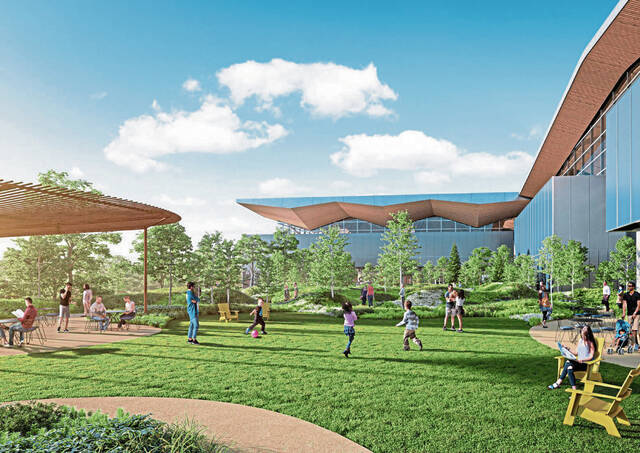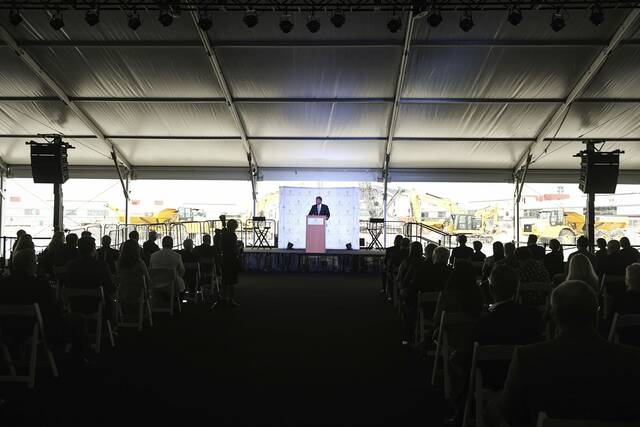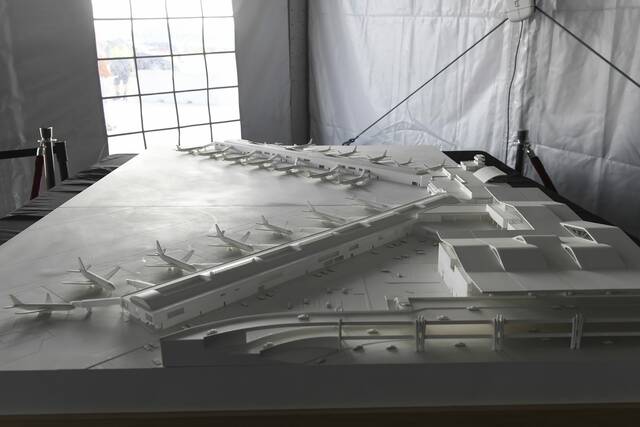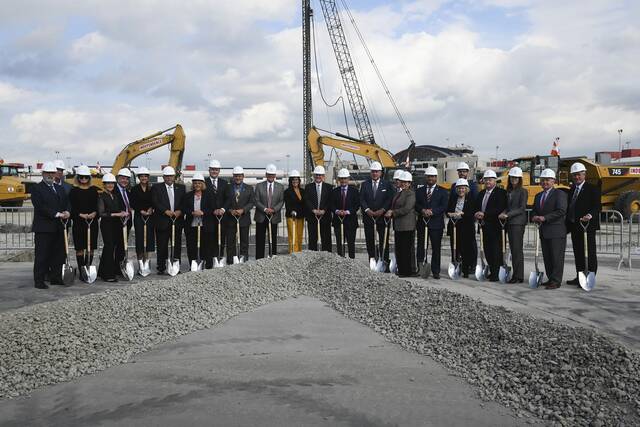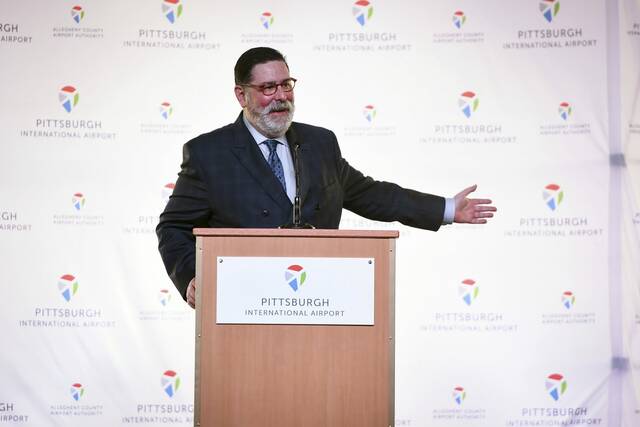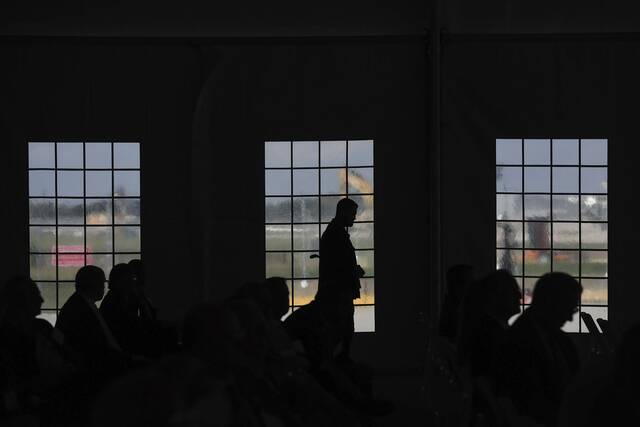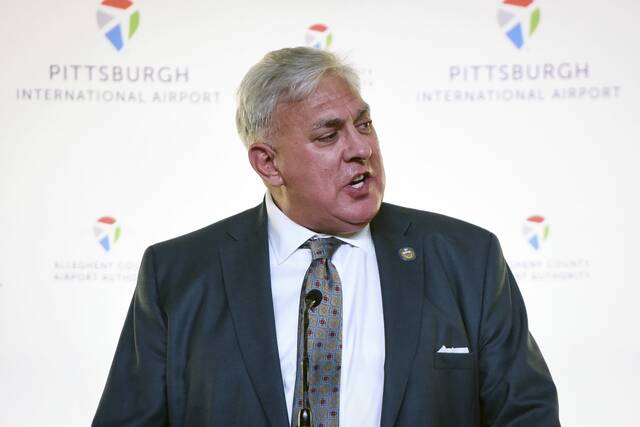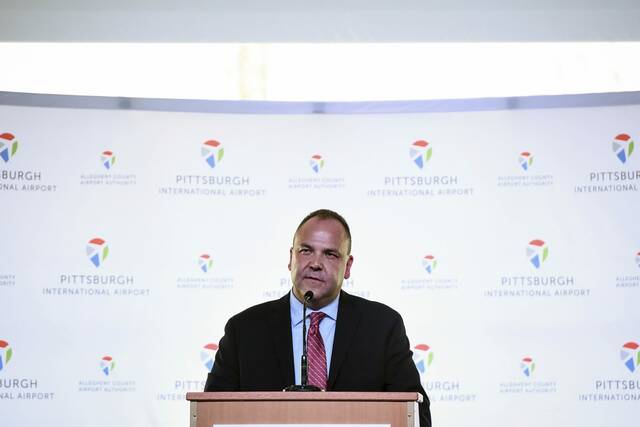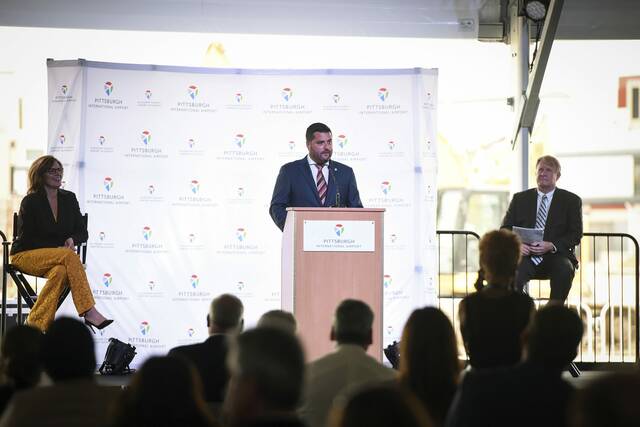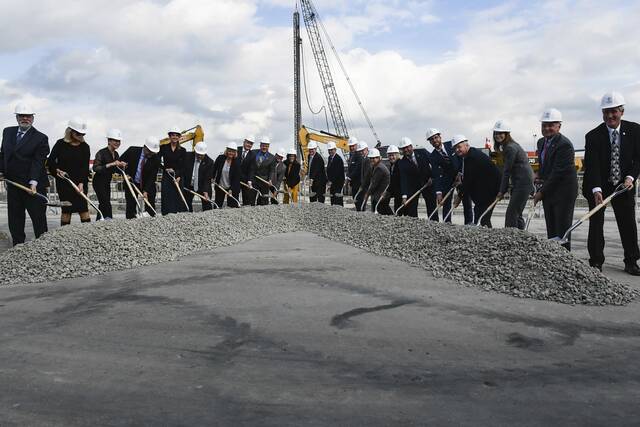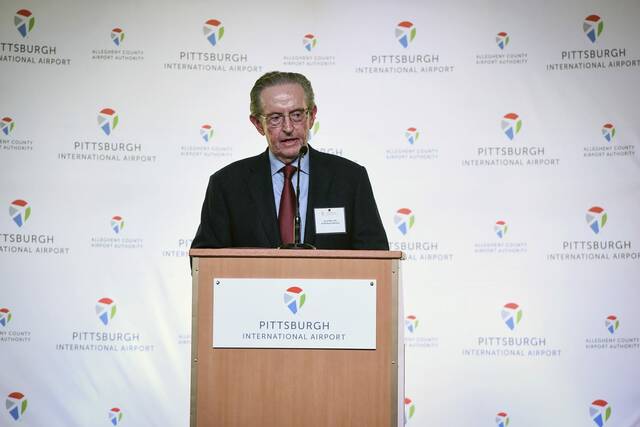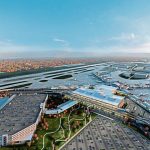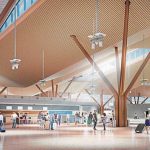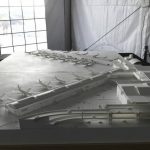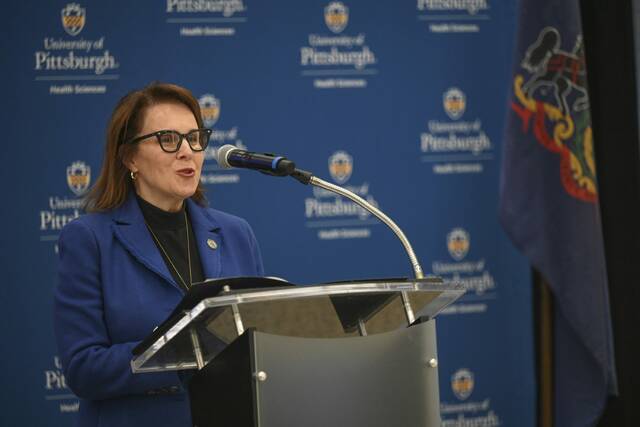Pittsburgh International Airport is still considered a gem by many airline industry experts nearly three decades after it opened as a hub for the former US Airways.
“Pittsburgh, as it is today, is still one of the most innovative airports out there,” said Mike Boyd, president of the Colorado-based aviation consulting firm Boyd Group International. “But it was built for the airport industry of 1992. The airport industry of today and tomorrow is very different.”
And so Pittsburgh International is ripe for an overhaul, according to airline industry analysts and county and airport officials who support the goals of a planned $1.4 billion modernization project in the works since 2017.
An event to mark the start of construction was held Thursday, drawing more than 400 people to the airport. The project was placed on hold last year as airlines reeled from the effects of the covid-19 pandemic.
Airline fees to the airport will help fund the overhaul.
Nearly 400 ppl, incl @PITairport & @Allegheny_Co officials & local/state lawmakers, are gathered under a large white tent near the commercial curbs to celebrate.
Why? A $1.39B overhaul of #Pittsburgh airport is finally taking off. ????
On the speakers ????:
“Fly Like an Eagle.” pic.twitter.com/XYQEvodJU0— Natasha Lindstrom (@NewsNatasha) October 14, 2021
After hollowing out following US Airways’ decision to close its Pittsburgh hub in 2004, the airport rebounded and managed to grow its passenger volume, number of airlines and sources of revenue in recent years. The airport also ranks among the nation’s best when it comes to its eye-pleasing design and consumer amenities, industry experts said.
Boyd, the aviation consultant, said Pittsburgh is “getting way ahead of the curve” by moving forward with the project, which is expected to be completed in 2025 — two years later than initially planned.
“It’s investing in the future,” Allegheny County Executive Rich Fitzgerald said in advance of Thursday’s event. “It’s showing that Pittsburgh’s future is very bright, and it comes on the heels of a month-or-so ago when we found out that we’re growing again in population for the first time in 60 years. We’re becoming a more diverse and a more open county, and we’re bringing people in from all over the country and all over the world.”
The authority that runs the airport bills the project as “the first new airport terminal designed and constructed in the post-pandemic world,” promising that it will “improve airport facilities, transform passenger experience and advance the region.”
“It’s a situation now where you have to rebuild your airport of the future,” Boyd said, noting “the only other airport doing it out there is Denver.”
The existing airport, with landside and airside terminals, was designed specifically for US Airways before the carrier pulled out of Pittsburgh — sapping the airport of 75% of its revenue in one fell swoop.
Aside from being dated in terms of technology and logistics, such as luggage beltways that are no longer needed, there’s a lot of unused space being wasted, Fitzgerald said.
Long stretches of unmanned ticket counter space sit empty, as most passengers check in by smartphone or using a kiosk.
The baggage carousels are so dated that crews haven’t been able to find parts to replace them when they break, according to Fitzgerald.
“This modernization is going to reduce operating costs,” Fitzgerald said. “It just doesn’t make sense to have an antiquated facility. Not having the tram, all the beltways and the luggage. When they break down, there’s no way to repair it, you almost have to rebuild a whole new system.”
“And that happens over 35 years,” he added, referring to the time that has elapsed since construction on the existing airport began. “Things become obsolete, there’s new technology.”
The county executive stressed the importance of the project not just for travelers, but also for the many other vendors and businesses that have set up shop on the airport’s expansive property.
He said it has a major economic impact on all of Western Pennsylvania.
“The airport is not just a place where people fly in and out of for leisure,” Fitzgerald said. “It’s becoming a manufacturing hub. It’s become a significant cargo and distribution logistics hub, with all of the different players that continue to use it and grow.”
“And when the (Shell) petrochemical cracker plant (in Beaver County) comes online next year, that’s going to even add to the vitality of what’s going on in the airport corridor,” he said. “It’s changed in so many ways from when we broke ground back in 1987.”
Major reconfiguration coming
The airport’s new design eliminates the current landside terminal and constructs a new, 700,000-square-foot one alongside the existing airside terminal, reducing the number of gates. Other features aim to shorten walking distances and speed up the flow through security areas.
The underground tram that now travels between the two terminals will be eliminated, and visitors will have the option to visit outdoor gardens and green spaces.
The bright, airy, two-level design was inspired by Pittsburgh’s rolling topography. It features high ceilings, big windows and lots of greenery.
The price tag has climbed from $1.1 billion when first pitched to $1.39 billion.
Officials have pledged that no local tax money will be spent on the bond-financed project.
The amount seems reasonable based on plans outlined thus far, said Bijan Vasigh, a professor at Embry-Riddle Aeronautical University in Daytona Beach, Fla.
Despite covid’s impact, with passenger travel still down by about 30% from 2019, leisure travel is expected to bounce back next year, particularly as vaccination rates increase.
“What they’re doing with this makes a lot of sense,” Vasigh said. “They’ve got to restructure how passengers are handled, how they’re flowed, how they’re moved on and off of airplanes and how they move luggage. All of those things have to be done, and might as well do it now than do it later.”
Some oppose the plan
Not everyone eyeing the project agrees.
The Allegheny Institute for Public Policy, a conservative think tank that touts itself as a taxpayer watchdog, has voiced opposition to spending so much money on the airport amid such a tumultuous time for the airline industry.
“Much like the 1992-built terminal, (Pittsburgh International Airport) claims it will be paid for by the airlines,” the institute wrote in a September policy brief. “Given recent history, and travel that has been negatively affected by the pandemic, this is a project that should not be undertaken.”
But analysts such as Boyd and Vasigh said that the Pittsburgh airport has made significant strides over the past several years and is poised for continued growth.
It’s helped that the airport has increased the number of airlines and also has several more sources of revenue — from the development of manufacturing centers and corporate headquarters on airport authority property and the growth in cargo, air freight and mail shipping to Marcellus shale natural gas revenues from drilling on authority property that has helped pad its bottom line.
“Diversification is the name of the game,” Vasigh said. “You minimize potential losses in the future.”
The airport has confronted some setbacks during its rebound, such as the demise of the now-defunct OneJet. The startup carrier went bankrupt in 2018 and has been sued by the Allegheny County Airport Authority for only flying to two of the 10 cities it promised in exchange for a $1 million incentive in state gambling revenue.
“It’s a risky industry. It has been for years. So we often are taking risks for the betterment of the community,” Fitzgerald said. “Our successes so far have far, far, outpaced the drawbacks that we have had.”







